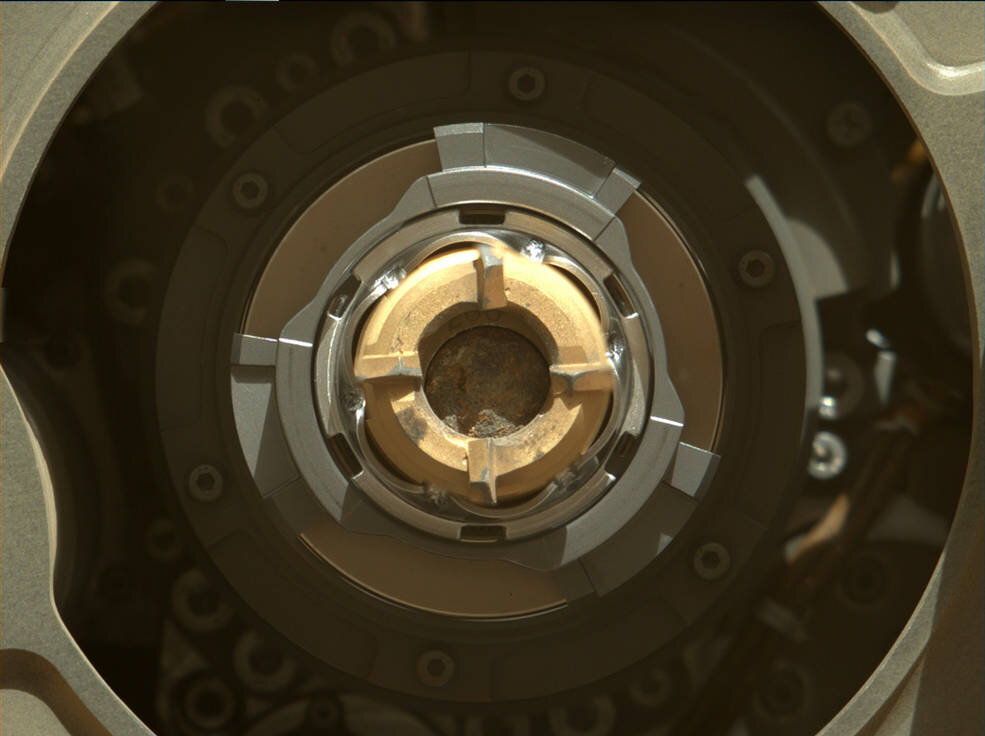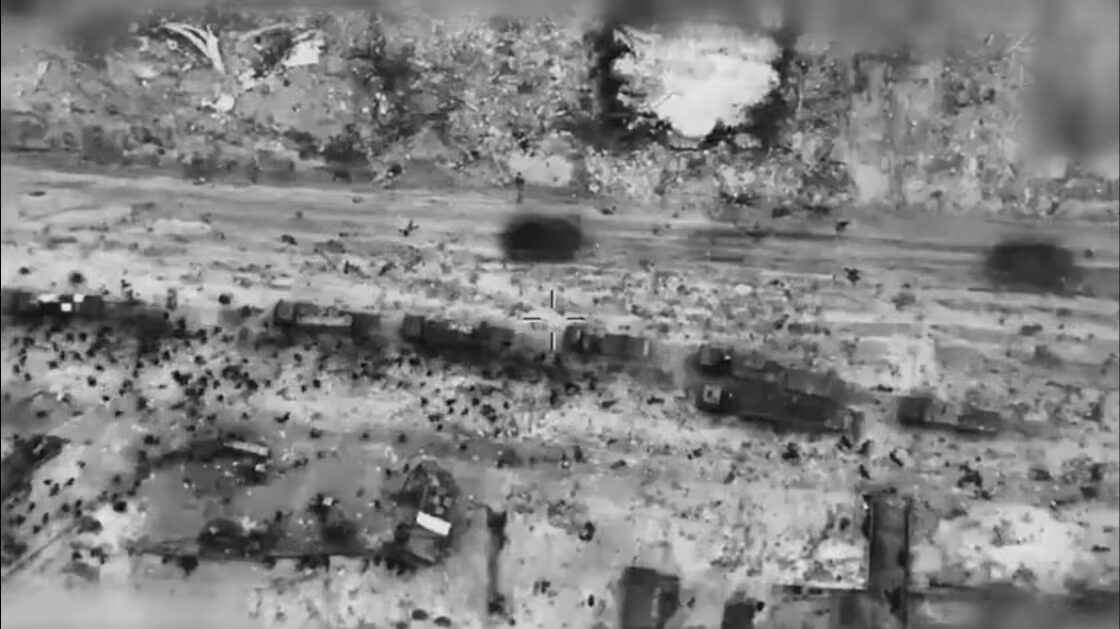PICTURED: The drill hole from Perseverance’s second sample-collection attempt can be seen, in this composite of two images taken by one of the rover’s navigation cameras. PC: NASA/JPL-Caltech.
The Perseverance Rover collected (presumably) its first sample of a Martian rock, drilling into a briefcase-sized stone on the Earth date of September 1st. The core sample was taken by a concussive drill bit at the end of a 7-foot long arm and stored in a sample tube.
It was the second attempt at drilling made by the rover following an August 4th attempt which failed after data downlinked from the rover indicated that while the drilling had been successful, no sample had found its way into storage.
What the rock contains, we have to wait and see. Signs of microbial life? We can only hope. Iron oxide? Most certainly, it is the ‘Red Planet’ after all. The rock is currently housed in what scientists were describing as “the cleanest thing in the universe,” referring to the sample tube’s sanitation protocol.
September 1st images downlinked from Perseverance show what appears to be rock enclosed safely within the sample tube. After a short vibration cycle cleaned the drill bit of debris and allowed the sample to slide down further into the tube, a second set of images were ordered which, because of changing light conditions, couldn’t show off their new rock.
NASA have determined to take another set of images to ensure the rock has made it inside the sample tube, and will wait several days to ensure it happens.
“The project got its first cored rock under its belt, and that’s a phenomenal accomplishment,” said Jennifer Trosper, project manager at NASA’s Jet Propulsion Laboratory in Southern California. “The team determined a location, and selected and cored a viable and scientifically valuable rock. We did what we came to do. We will work through this small hiccup with the lighting conditions in the images and remain encouraged that there is sample in this tube”.
PICTURED: This Sept. 1 image from NASA’s Perseverance rover shows a sample tube with its cored-rock contents inside. The bronze-colored outer-ring is the coring bit. The lighter-colored inner-ring is the open end of the tube, and inside is a rock core sample slightly thicker than a pencil. Credits: NASA/JPL-Caltech/ASU/MSSS.
Currently exploring the deepest part of the ancient lake bed in the Jezero Crater, the end of its first mission phase will be hundreds of Martian days from now. After returning with the first 8 samples to its landing site, Perseverance will travel north, then west, toward the location of its second science campaign: Jezero Crater’s delta region.
Just like on Earth, The delta is the fan-shaped remains of the confluence of an ancient river and a lake within Jezero Crater. The region may be especially rich in carbonate minerals. On Earth, such minerals can preserve fossilized signs of ancient microscopic life and are associated with biological processes.



